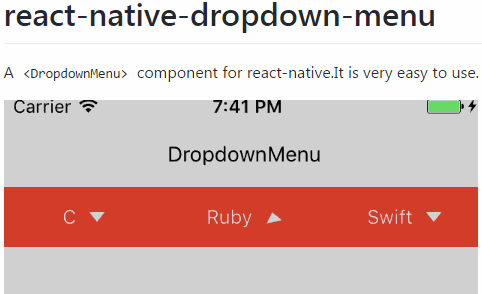Markdown React Native
Easy to Maintain Open Source Documentation Websites. Development Tools Repositories Developers Hub.
- React Native Tutorial
- Core Concepts
- Components and APIs
- React Native Useful Resources
- Selected Reading
React Native is a JavaScript framework for building native mobile apps. It uses the React framework and offers large amount of inbuilt components and APIs.
This tutorial is designed for JavaScript and React developers who aspire to learn mobile building skills. By following this course, you will expand your React and JavaScript knowledge, learn some concepts of functional programming, and prepare to enter the mobile world. Since JavaScript world is moving forward, we will keep up with it and use EC6 syntax in this tutorial.
To be able to follow this tutorial, you should be familiar with React and have solid JavaScript knowledge. Even if you do not have previous experience with React, you should be able to follow it. In this tutorial, we will explain some fundamental React concepts.

Declarative
React makes it painless to create interactive UIs. Design simple views for each state in your application, and React will efficiently update and render just the right components when your data changes.
Declarative views make your code more predictable and easier to debug.
Component-Based
Build encapsulated components that manage their own state, then compose them to make complex UIs.
Since component logic is written in JavaScript instead of templates, you can easily pass rich data through your app and keep state out of the DOM.
Learn Once, Write Anywhere

React-native-markdown-package
We don’t make assumptions about the rest of your technology stack, so you can develop new features in React without rewriting existing code.
React can also render on the server using Node and power mobile apps using React Native.
A Simple Component
React components implement a render() method that takes input data and returns what to display. This example uses an XML-like syntax called JSX. Input data that is passed into the component can be accessed by render() via this.props.
JSX is optional and not required to use React. Try the Babel REPL to see the raw JavaScript code produced by the JSX compilation step.
Loading code example...
A Stateful Component
In addition to taking input data (accessed via this.props), a component can maintain internal state data (accessed via this.state). When a component’s state data changes, the rendered markup will be updated by re-invoking render().
Loading code example...
An Application
Using props and state, we can put together a small Todo application. This example uses state to track the current list of items as well as the text that the user has entered. Although event handlers appear to be rendered inline, they will be collected and implemented using event delegation.
Loading code example...
React Native Markdown Render
A Component Using External Plugins
Markdown Editor React
React allows you to interface with other libraries and frameworks. This example uses remarkable, an external Markdown library, to convert the <textarea>’s value in real time.
Loading code example...
